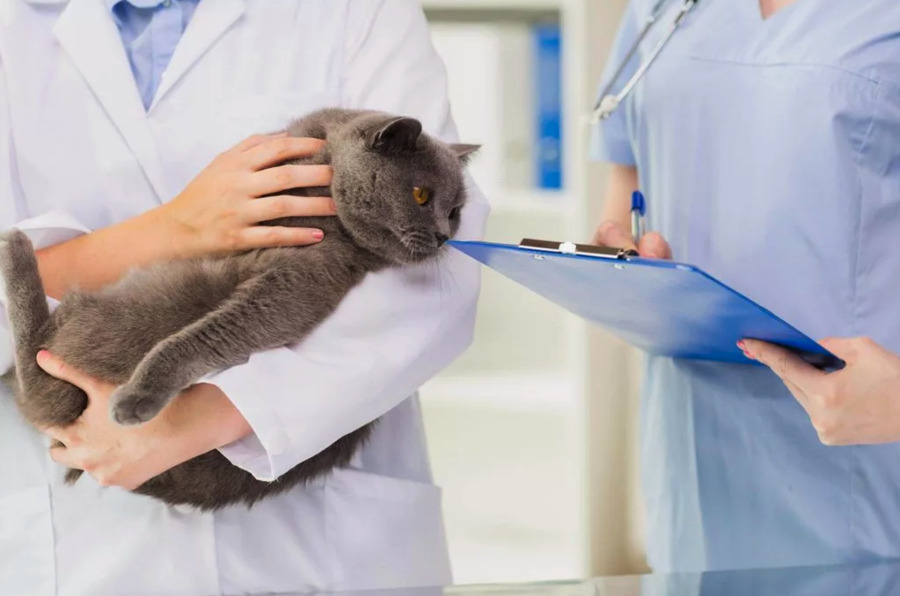Introduction to Urolithiasis in Cats
Cats are known for their comforting presence and the health benefits they bring to their owners, such as stress reduction and emotional support. The purring of a cat, often comforting and soothing, has been shown to have therapeutic effects, helping humans recover from illness and relieve stress. Despite these positive effects, cats themselves are susceptible to various health conditions that require careful attention. Urolithiasis is one such critical condition that affects cats. This disease, involving the formation of urinary stones, can severely impact a cat’s quality of life and requires timely and effective management to prevent serious complications.
What is Urolithiasis in Cats?
Urolithiasis refers to the condition in cats where uroliths or urinary stones form. These stones are hard, crystalline deposits composed mainly of minerals and salts that have accumulated in the urinary tract. Normally, a healthy cat’s urinary system effectively flushes out these minerals and salts through urine. However, when there is an imbalance or an excessive build-up, these components can precipitate out of the urine, forming sediment. Over time, this sediment solidifies into stones, which can vary widely in size and can cause significant discomfort and health issues for the cat.
Origins and Composition of Urinary Stones
Urinary stones in cats are categorized based on their chemical composition and the conditions under which they form:
Struvites
These are typically found in alkaline urine and are composed of magnesium ammonium phosphate. They can grow rapidly under favorable conditions.
Calcium Oxalates
Common in today’s cats, these stones form in acidic to neutral urine environments and are known for their hardness.
Urates
These are composed of uric acid and are often linked to liver diseases or genetic disorders affecting metabolism.
Cystines
Resulting from a genetic defect that affects amino acid transport, cystine stones are quite rare but serious.

Risk Factors for Urolithiasis in Cats
Several factors can predispose cats to urolithiasis, affecting both males and females, with males at a higher risk due to their anatomical features. Specific breeds such as Persians, Siamese, and Ragdolls are more susceptible to developing urinary tract diseases. Other risk factors include:
àGenetic predisposition to urinary issues
- Lack of neutering or spaying
- A sedentary lifestyle which contributes to poor health outcomes
- Obesity, which can exacerbate many health issues including urolithiasis
- Diets high in certain proteins like fish or seafood that can alter urinary pH
- Drinking water with high mineral content
- Imbalances in essential vitamins that affect overall metabolism
Symptoms of Urolithiasis in Cats
Early detection of urolithiasis through symptom recognition is vital for successful treatment. Symptoms of this condition can be quite distressing and include:
- Difficulty and pain during urination, often accompanied by frequent unsuccessful attempts to urinate
- Visible blood in the urine, which can be alarming to cat owners
- Increased thirst, possibly due to the body’s attempt to flush out the stones
- Unpleasant odor from urine due to infection or stone formation
- Excessive licking of the genital area
- Noticeable changes in behavior such as lethargy or irritability
- Physical symptoms like abdominal swelling and in severe cases, vomiting or a drop in body temperature signaling broader systemic impact
Treatment Options for Urolithiasis in Cats
Conservative Treatment
Initial treatment efforts focus on managing the condition non-invasively with:
Analgesics
These are used to manage pain associated with the condition.
Anti-Inflammatory Drugs
These help to reduce inflammation in the urinary tract, making it easier for the cat to urinate.
Antispasmodics And Myorelaxants
These medications help to relax the muscles in the urinary tract, alleviating discomfort.
Antibiotics
These are prescribed if there is a secondary bacterial infection present.
Vitamins And Minerals
Supplements may be given to correct dietary imbalances that could contribute to stone formation.
Surgical Treatment
If the stones are too large, or if conservative measures fail, surgical interventions may be necessary:
Catheterization
This procedure helps to clear the urinary tract of sand-like stones.
Urethrostomy
This is often a solution for recurrent or severe cases, especially in male cats, where a new permanent urinary opening is created to prevent future blockages.
Post-Surgical Care
After surgery, maintaining a clean and stress-free environment is crucial for recovery. This includes:
- Regularly administering any prescribed medications
- Monitoring the surgical site for signs of infection
- Ensuring the cat is comfortable and free from stressors that could impede healing

Dietary Management
Managing a cat’s diet is key to both treating and preventing urolithiasis. Recommendations often include:
- Increasing fluid intake to help dilute the urine and prevent stone formation
- Special veterinary-prescribed diets that help manage mineral balance and control urinary pH
- Avoiding foods that are high in oxalates or excessive minerals that can contribute to stone formation
Veterinary Care in Dubai
At “Vets in the City” in Dubai, specialized care for urolithiasis and other feline conditions is available. The clinic boasts state-of-the-art diagnostic and treatment facilities manned by experienced veterinarians. Comprehensive care includes supporting cat owners throughout the diagnosis, treatment, and recovery phases, emphasizing the importance of expert veterinary intervention in managing and resolving urolithiasis effectively.
These expanded sections provide a deeper insight into each aspect of the guide, enhancing understanding and offering practical advice for managing and treating urolithiasis in cats.

Hiking addict, self-starter, record lover, Mad Men fan and screen printer. Acting at the sweet spot between aesthetics and programing to create not just a logo, but a feeling.
